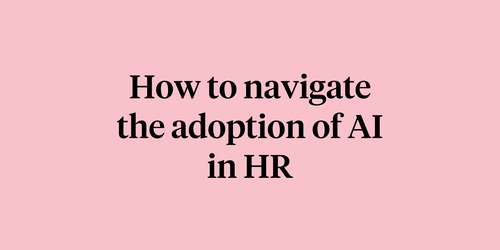
Workplace Diversity, Inclusion, and Intersectionality Report 2019

Since 2015, we've supported companies in their diversity and inclusion journey with our Diversity and Inclusion Survey, created in partnership with Paradigm. Over 165 organizations from North America, Latin America, Europe, Oceania, Asia, and the Middle East from various industries, including Technology, Non-Profit, Education, Media, and Professional Services, have used the Diversity and Inclusion Survey to collect feedback through the Culture Amp platform.
This year, we're thrilled to offer our Diversity and Inclusion Starter Kit, which includes free access to the survey, powerful reporting, recommendations to drive change, and training to help guide you. In addition, we're proud to bring you our 2019 Workplace Diversity, Inclusion, and Intersectionality Report, which provides deeper insights into the makeup of our workforce and the employee experience across different demographics.
Below are the key insights from this year's report, highlighting progress across industries and where more focused efforts are needed to make all workplaces diverse and inclusive.
We need data with action potential
It’s not enough to conduct a diversity census (a survey collecting demographics only) in isolation or to add ‘gender’ as a demographic in an engagement survey. Organizations need to collect information about representation (who is in the workforce) across a broad range of demographics and pair this with data specifically related to the employee experience to increase the potential to take meaningful action informed by data. Taking this approach will set organizations up for success when taking targeted action.
Inclusion is not a standalone initiative
Diversity, equity, and inclusion are often seen as something owned by a particular person or part of the business. We’re seeing more organizations challenge this belief and embed diversity and inclusion into the organization's everyday work. For example, rather than running a Diversity and Inclusion Survey as a standalone initiative, our customers are incorporating these concepts into engagement surveys and the following action process. This signals the essential yet everyday nature of diversity and inclusion.
Tailored small wins lead to greater change
Teams that take a small-wins approach to action tailored to their needs typically see between 4-8% uplift on scores related to their focus areas. A small win is a concrete, complete, implemented outcome, like increased transparency in decision-making or developing easy ways for people to book skip-level conversations with leaders. This approach to taking action brings the entire organization along for the journey and builds momentum for other diversity and inclusion initiatives.
A data deficit remains
We know that we manage what we measure. Data around gender and age are often collected, but the demographics of race, ethnicity, parental status, or disability are less consistently measured, especially in places like Europe or Australia. This is partly because organizations are at different stages of their diversity and inclusion journey and face specific local and cultural challenges when collecting and acting on data. Still, more can be done to broaden the definition of diversity and to ensure that organizations are collecting data that allows for an intersectional lens toward taking action.



